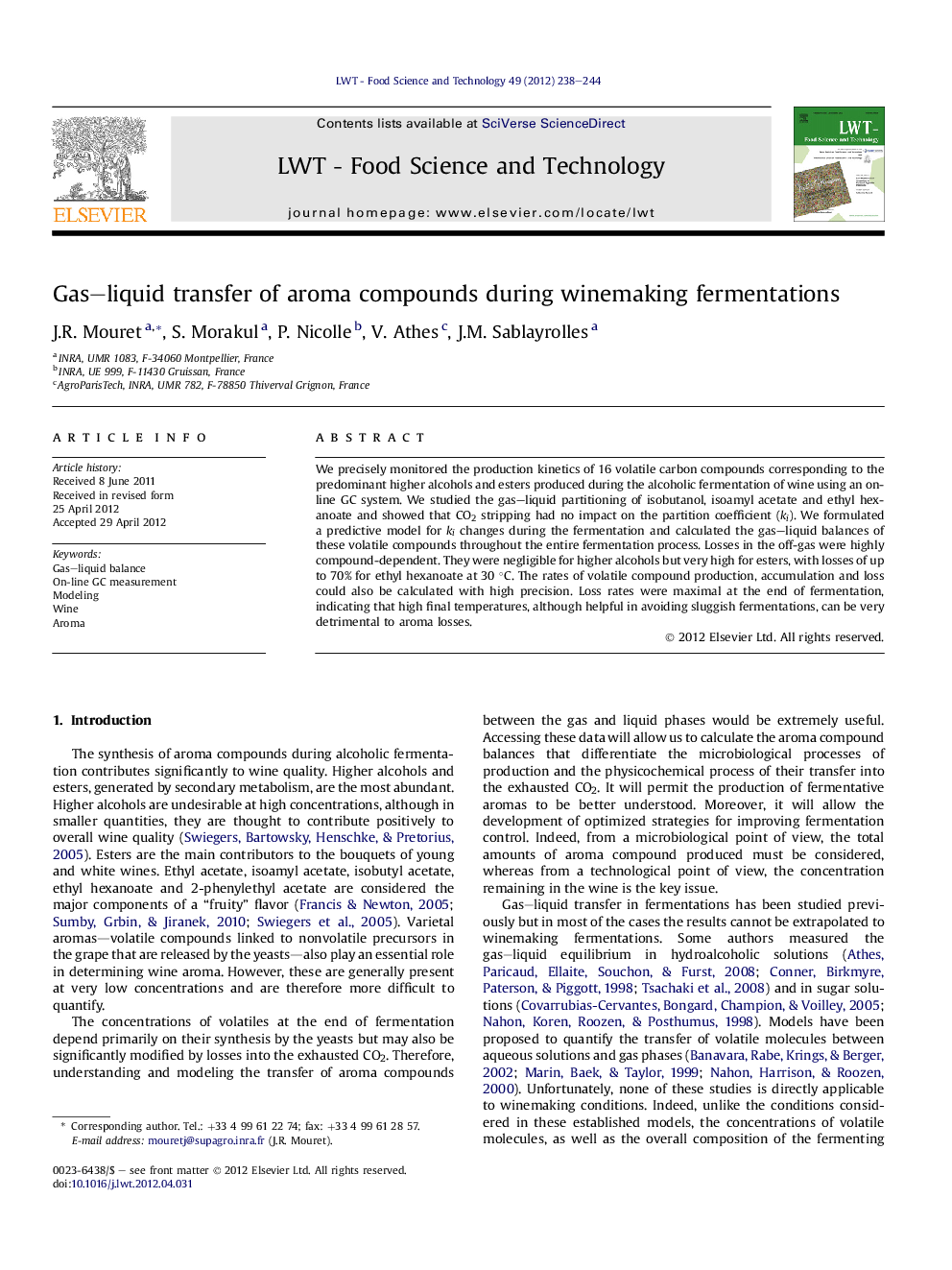| Article ID | Journal | Published Year | Pages | File Type |
|---|---|---|---|---|
| 4563974 | LWT - Food Science and Technology | 2012 | 7 Pages |
We precisely monitored the production kinetics of 16 volatile carbon compounds corresponding to the predominant higher alcohols and esters produced during the alcoholic fermentation of wine using an on-line GC system. We studied the gas–liquid partitioning of isobutanol, isoamyl acetate and ethyl hexanoate and showed that CO2 stripping had no impact on the partition coefficient (ki). We formulated a predictive model for ki changes during the fermentation and calculated the gas–liquid balances of these volatile compounds throughout the entire fermentation process. Losses in the off-gas were highly compound-dependent. They were negligible for higher alcohols but very high for esters, with losses of up to 70% for ethyl hexanoate at 30 °C. The rates of volatile compound production, accumulation and loss could also be calculated with high precision. Loss rates were maximal at the end of fermentation, indicating that high final temperatures, although helpful in avoiding sluggish fermentations, can be very detrimental to aroma losses.
► Gas–liquid balances were done for isobutanol, isoamyl acetate and ethyl hexanoate. ► CO2 stripping had no impact on the partition coefficient (ki) of these compounds. ► A predictive model for ki changes during the fermentation was formulated. ► Losses were negligible for isobutanol but very high for esters. ► Rates of total production, accumulation and loss were calculated.
